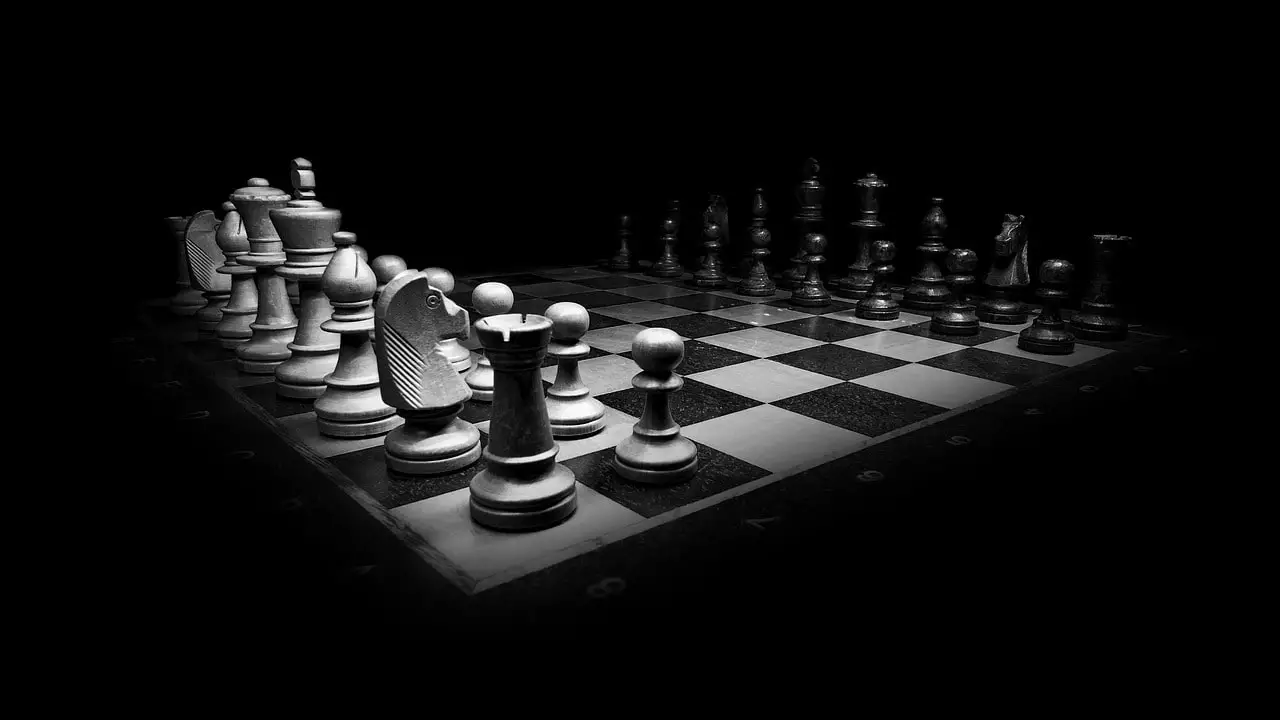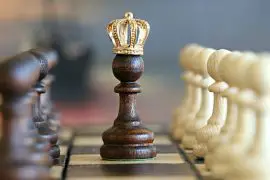Chess is one of the oldest and most popular board games, which is still in use. It has a history from the 15th century. This is a two-player board game known for abstract strategy and mind games. There is no particular time for this game. It can be ten minutes or sixty minutes, depending on the game. Chess is assumed to have evolved from an ancient game named ‘chaturanga,’ a similar game of Indian origin.
This popular game is played on a checkered board with specially designed pieces. The main purpose and objective of chess is to capture the opponent’s king.
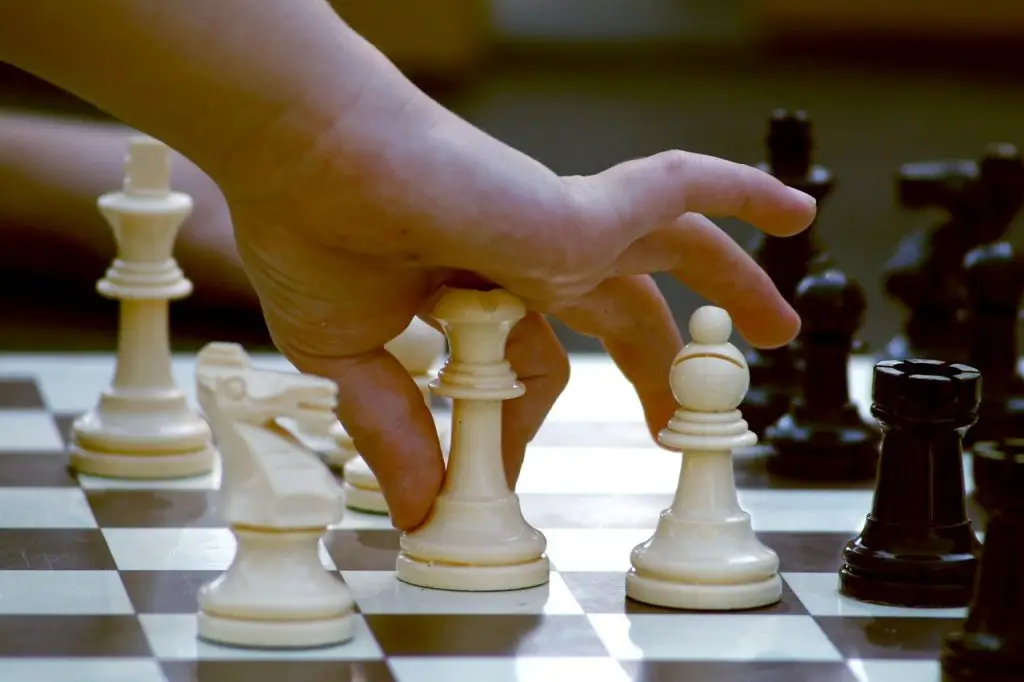
History of Chess
Contents
Beginning
There is no proper evidence of chess before the so-called ‘chaturanga.’ Anyways archeologists and researchers say the game pieces were found in many parts of the world, like Russia, central Asia, China, India, and Pakistan, before the game’ chaturanga.’
Chaturanga was a game that was in practice during the 7th century. The word ‘chaturanga’ means battle formation in Sanskrit. As in modern chess, chaturanga had the main rule based on one piece, which is capturing the king. But it had other different powers to other pieces. Anyways, the evolution of chaturanga is unclear and has controversies on the topic.
In the beginning, though chess had Indian and central Asian origins, it later found its path to western Europe and Russia by the 9th century. By the 10th century, it had also reached Switzerland, north Africa, and Spain. Around the 11th century, it came to Japan and Korea. During the early days, traders and Buddhist pilgrims used the primary mode of game spread.
Entering Europe
Chess was slowly introduced in Europe with the expansion of empires and trade routes. Some sources say during certain kings’ regimes, chess was banned strictly. However, the game’s popularity was connected to social status back then. It was assumed that it was associated with knowledge, wealth, and power. As early as in 15th century, chess was known as the royal game.
Why is Chess Popular?
Being known as the royal game, chess automatically became popular. Later during the 20th century, it was played for a global title and prize money. So it always had a demand. Now we can play this game on online platforms too.
Setting of Rules
As in every board game, chess, too, had its regional variation. Reaching for an international standard rule; came a long way. At an early level, the pawn could move only one square in its first turn. But later, during the 1300s, it could move two squares. Anyways this rule wasn’t a successful one.
With two main rules/changes introduced in 1475, chess became popular with more acceptance. By then, the counselor was able to move only square diagonally. And the pawn, when reached the eighth rank, could only become a counselor. But the new change made the counselor a gender change, and it became the modern queen with increased mobility and more powers on the board. Also, the piece, limited to a two-square diagonal jump, became the bishop, doubling its range. This piece was known as the elephant in chaturanga.
The last two significant rule changes were castling and en-passant capture. But this took a long to be accepted by everyone. Until the 18th century, these were in little practice. More variations happened until the later 19th century.
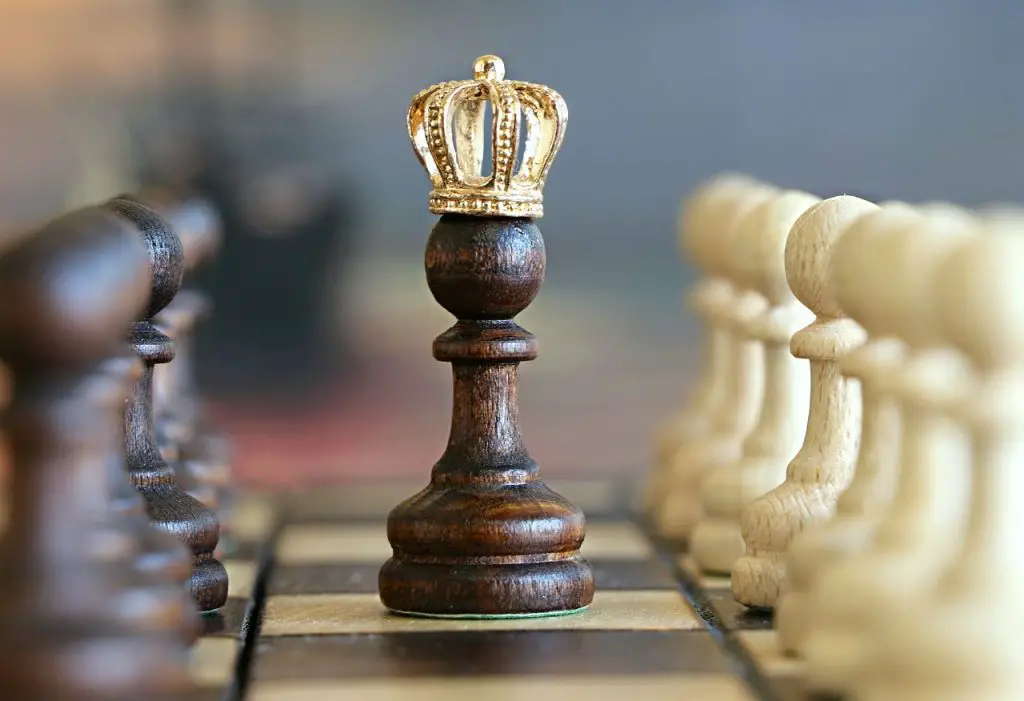
The Structure of the Game
Chess is played on a 64-squared board. Eight vertical rows are called files, and the eight horizontal rows are called ranks. These squares are set alternatively with two colors, dark and light. The dark colors are black and green, and the lighter colors are white, yellow, or beige.
There is an algebraic notation to identify the movements on the board. The ranks are 1-8, beginning with the one closest to white. The files are labeled a-h beginning with the file at the white’s left hand. So in this manner, each square has a letter and a number as a3, b5. The files from a-d are identified as the queen’s side, and the files from e-h are the king’s side.
The opponent players will have a light-colored square on their right-hand side.
The setup indicates a battlefield where two armies fight to capture the other king. There are 16 pieces for each army, with six different pieces. Their different shapes identify them, and they have unique movements too. The pieces are king, rook, bishop, queen, pawn, and night.
The pieces are black and white, each color set of each team.
Each player moves the piece on alternative moves with white starting.
Let us have a small briefing about the pieces.
- King – the game begins with the white king at the e1 position. Black’s king is positioned at e8. Both kings can move in any direction.
- Queen – each player has a queen. This piece combines the powers of rook and bishop. So this is known as the most powerful piece on the chessboard. The white queen is positioned ad d1 while the black waits at d8.
- Rook – each player has two of these. These were previously known as castles. They begin the game at corner squares. It is placed at a1 and h1 for white while on a8 and h8 for black. This piece can be moved vertically or horizontally along an uninterrupted file or rank where it is placed.
- Bishop – there are two of these for each player. They start their game from c1 and f1 for white and c8 and f8 for black. This can move diagonally along an uninterrupted square line. So each player will have bishops, one that travels along white squares and the other traveling along black squares.
- Knight – there are two knights for each player. They are positioned between rooks and bishops. This can be said for the trickiest piece in the game. This can move in an ‘L’ shape. Moreover, the knight can jump over pieces to reach its place. This piece can be moved to a different color without traveling on the same color.
- Pawns – each player has eight pawns for them. They start at the second rank, closer to the player. White’s pawns may start at a2, b2, and so on positions, while black’s pawns will be placed on a7, b7, c7, and so on. These can be said s exceptional pieces. They can move only forward. What is unique about this piece on chess is it may move forward to the square ahead, but it captures the opponent’s piece diagonally.
- Pawns only have the specific option of en-passant, which is an in-passing option available to a pawn when an enemy pawn on a closer file advances two squares on its first move, which could have been captured if it moved only one square. In this instance, the first pawn can proceed to advance pawn en-passant as if it had advanced only one square. The en-passant should be made at this stage or later; it cannot be done.
- The other notable feature of pawns is that they can be promoted or upgraded to queen, rook, bishop, or knight when they reach the last file.
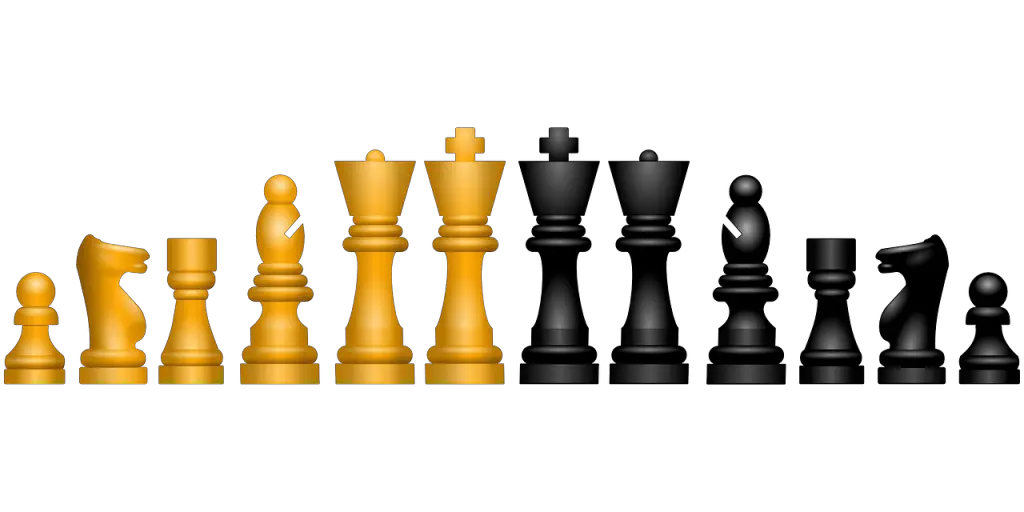
How Do the Pieces Work?
The king, queen, knight, bishop, and rook capture the enemy pieces in the same direction as they move.
Code of Conduct
Competitive chess is played based on rules and basic laws on how the pieces should be moved. There are also specific rules governing the game, time, and recording of the game. A piece touched during the game should be moved or captured unless the player says, “I adjust” before the move.
There are also instances where the player can be penalized. The player must understand all the ethics and rules before playing the game.
How Does the Game End?
When a player’s move attacks or captures the opponent’s king, the king is said to be in check. Also, there shouldn’t be further moves possible for them. The game is won at this stage. This stage is called ‘checkmate.’ A game can also end when one player says resigning as there are impossible further moves.
During the games with time, there are chances for players to win if the opponent fails to make a move during his given time.
What are the Game Draw Instances?
There can be instances when the game becomes drawn automatically. The following are a few examples of that.
- Fifty-rule move – this is an instance where fifty moves are made, yet no pawn has been moved or no captures have been made. In such a case, either player can ask for a draw.
- Stalemate – the player who has the chance to move has no possibilities for a legal move and is not in a check state; then the game will be drawn.
- Draw by agreement – this is done with mutual agreement between the players.
- Dead position – if any players cannot checkmate the other by legal movements, then the game will be drawn.
Chess International Governing Body
The international chess governing body is FIDE. This organization consists of national chess bodies from over 180 countries. Their primary duty is organizing world championship chess games. The first world champion of chess is Wilhelm Steinitz. The current chess champion is Magnus Carlsen of Norway. And the female champion is Ju Wenjun from China.
Chess Today
Though the original chess as a board game is still practiced today, there are also more popular online games. From youngers to adults, almost everyone enjoys playing it online. You can play with your friends or players from other countries.
Also, with technological advancement, people learn about the game online. There are paid and as well as free tutorials all around the web.

Summary
Chess, which can be said as a mastermind game, is suitable for everyone. It may sound challenging for some. But in reality, if you knew the basic rules, it would be easier for you. All you need is a bit of good thinking before every move. This game can also play as a hobby to improve your critical thinking. Though this game is said to be originated in Asia, now this is popular globally.
Are you fascinated by chess and other board games? Click here to access more information on board games and their origin.

